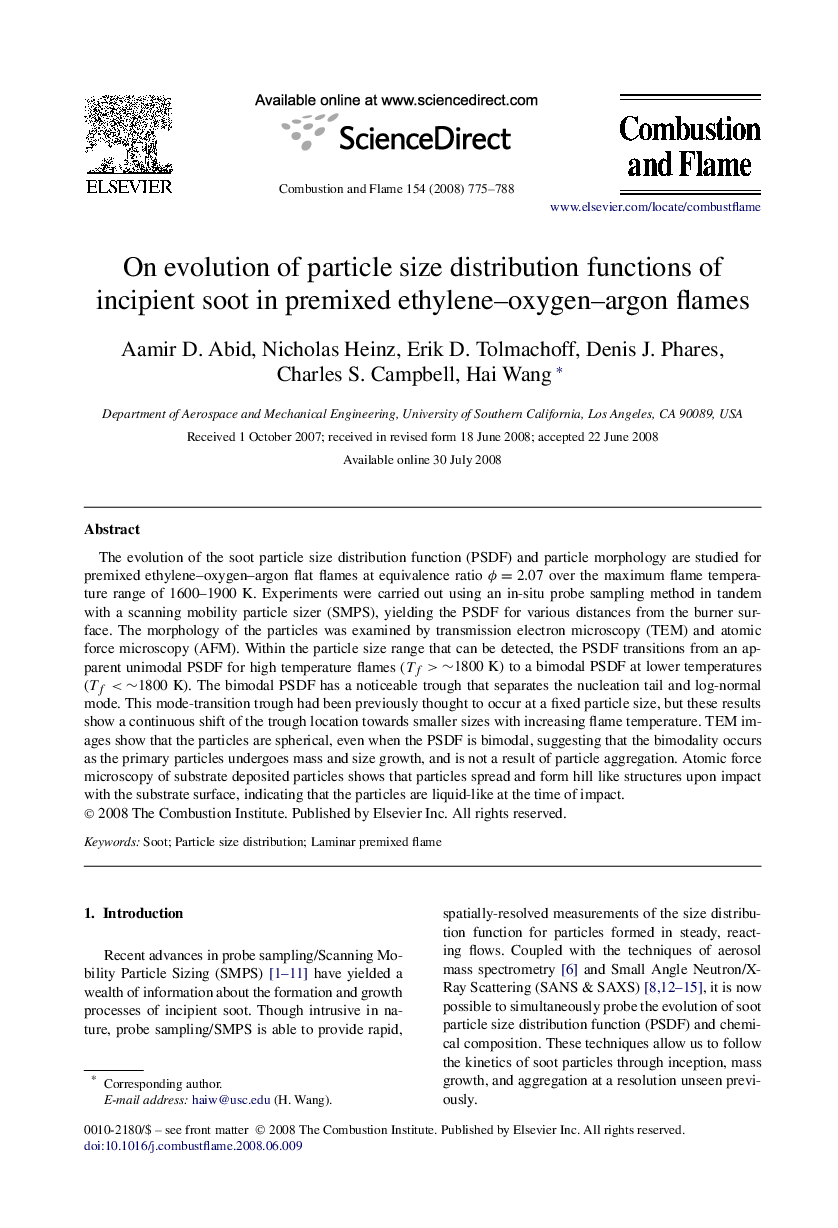| Article ID | Journal | Published Year | Pages | File Type |
|---|---|---|---|---|
| 167723 | Combustion and Flame | 2008 | 14 Pages |
The evolution of the soot particle size distribution function (PSDF) and particle morphology are studied for premixed ethylene–oxygen–argon flat flames at equivalence ratio ϕ=2.07ϕ=2.07 over the maximum flame temperature range of 1600–1900 K. Experiments were carried out using an in-situ probe sampling method in tandem with a scanning mobility particle sizer (SMPS), yielding the PSDF for various distances from the burner surface. The morphology of the particles was examined by transmission electron microscopy (TEM) and atomic force microscopy (AFM). Within the particle size range that can be detected, the PSDF transitions from an apparent unimodal PSDF for high temperature flames (Tf>∼1800 KTf>∼1800 K) to a bimodal PSDF at lower temperatures (Tf<∼1800 KTf<∼1800 K). The bimodal PSDF has a noticeable trough that separates the nucleation tail and log-normal mode. This mode-transition trough had been previously thought to occur at a fixed particle size, but these results show a continuous shift of the trough location towards smaller sizes with increasing flame temperature. TEM images show that the particles are spherical, even when the PSDF is bimodal, suggesting that the bimodality occurs as the primary particles undergoes mass and size growth, and is not a result of particle aggregation. Atomic force microscopy of substrate deposited particles shows that particles spread and form hill like structures upon impact with the substrate surface, indicating that the particles are liquid-like at the time of impact.
